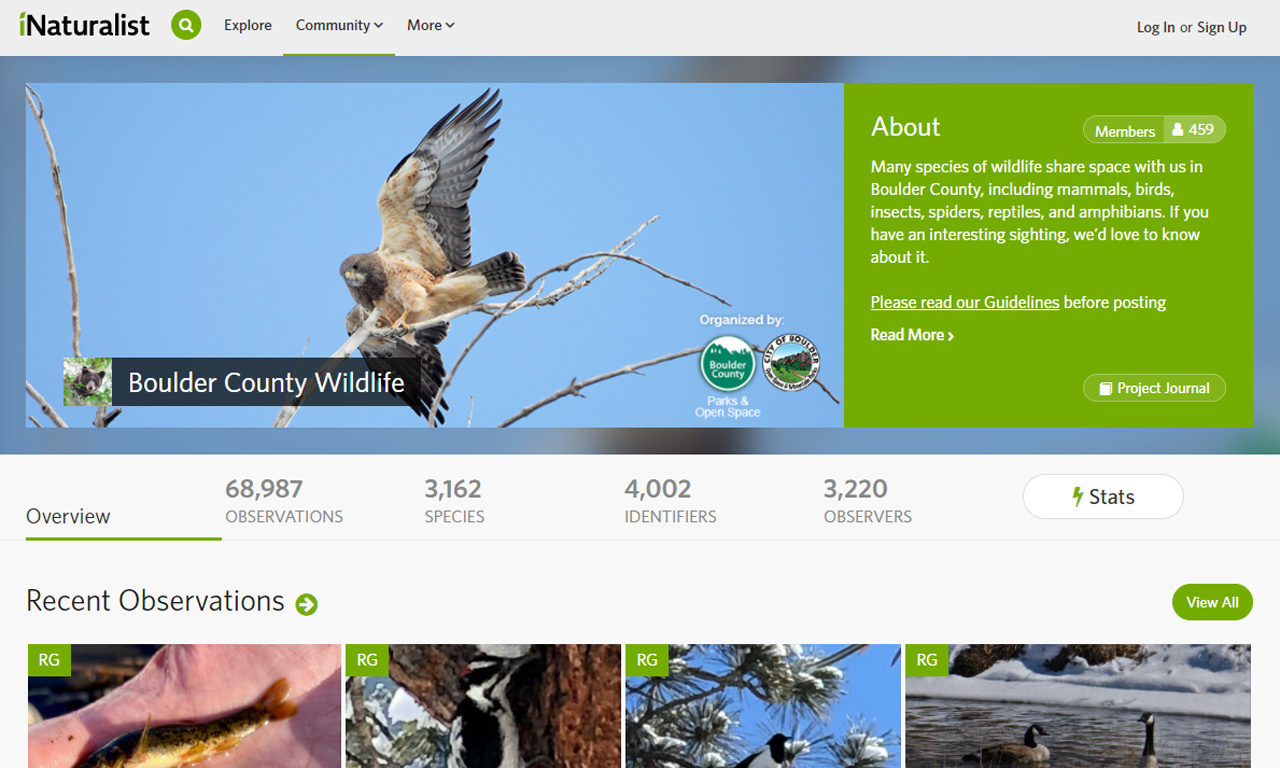Walking or riding along a trail on a summer morning you spot the most amazing wildflower. You’ve packed lightly and don’t have a guidebook to look up this little wonder. What do you do?
Chances are you have your phone or a camera, which means you can take advantage of a remarkable tool for identification—iNaturalist. This website/phone app can help you not only identify what you’ve seen, but will also add your observation to an international database for scientists to access.
How to Record an Observation
Take a photo (or two) of what you’ve observed. If you have cell phone coverage on your hike, you can immediately get suggestions about what you’ve seen from the iNaturalist app. No coverage? No problem. You can always upload the photo later to the app or directly to the iNaturalist website. The website offers a more comprehensive format. If you uploaded your photo to the app first, you can log into the website and add more detail. What’s next? After choosing a possible ID from the list generated by iNaturalist, other observers from around the world will confirm your identification. The observation is also loaded into databases so scientists can utilize this data.
You’re now a citizen scientist! You’ve just participated in a huge crowd-sourced citizen science project in addition to finding a name for your new favorite flower.
Ongoing iNaturalist Activities
Of course, there is more to iNaturalist than just a one-time photo and identification experience. You can join projects to help scientists on specific missions. At Boulder County Parks & Open Space we have two ongoing projects: Boulder County Wildlife and Flora of Boulder County. By joining these projects you make observations that are automatically added to our databases, enabling our wildlife biologists and plant ecologists to track what’s happening all over Boulder County.
There are also other specific projects and challenges you can join. For example, the Fire Followers project recruits volunteers to track the response of vegetation after fire. Plant ecologists lead volunteer projects designed to take a plant bioblitz of burned areas, recording evidence of as many species as they can on burn scars.
iNaturalist describes a “bioblitz” as a “communal citizen-science effort to record as many species within a designated location and time period as possible.”
You can also join in the annual City Nature Challenge. During this four-day event, cities around the world compete to see how many different species can be found by their iNaturalist teams.
In 2021, the Denver-Boulder team made 4,362 total observations of 735 different species by 365 observers. This year we hope to beat those numbers, and you can help! The challenge takes place April 29-May 2.
iNaturalist for All
One of the best aspects of iNaturalist is that it is available for everyone. It’s free to join, and you don’t need to be an expert on anything, including photography or computers. Although you can find some incredible photographs on the website, your photos don’t need to be fancy. There are simple and helpful training videos on the website that walk you through everything you need to know. Getting started is fun and easy.
Uniting technology and nature is a fantastic way to get kids and grandkids looking closely at the natural world. Recruit your own iNaturalist team and get outside! We look forward to seeing your observations.


